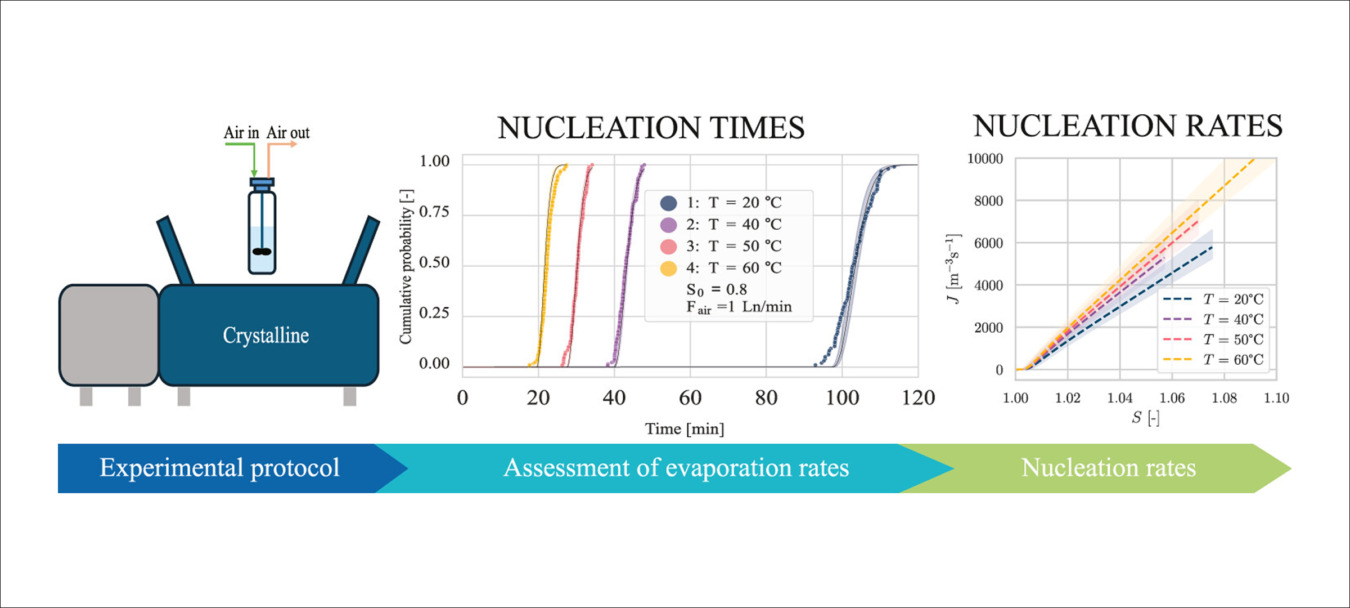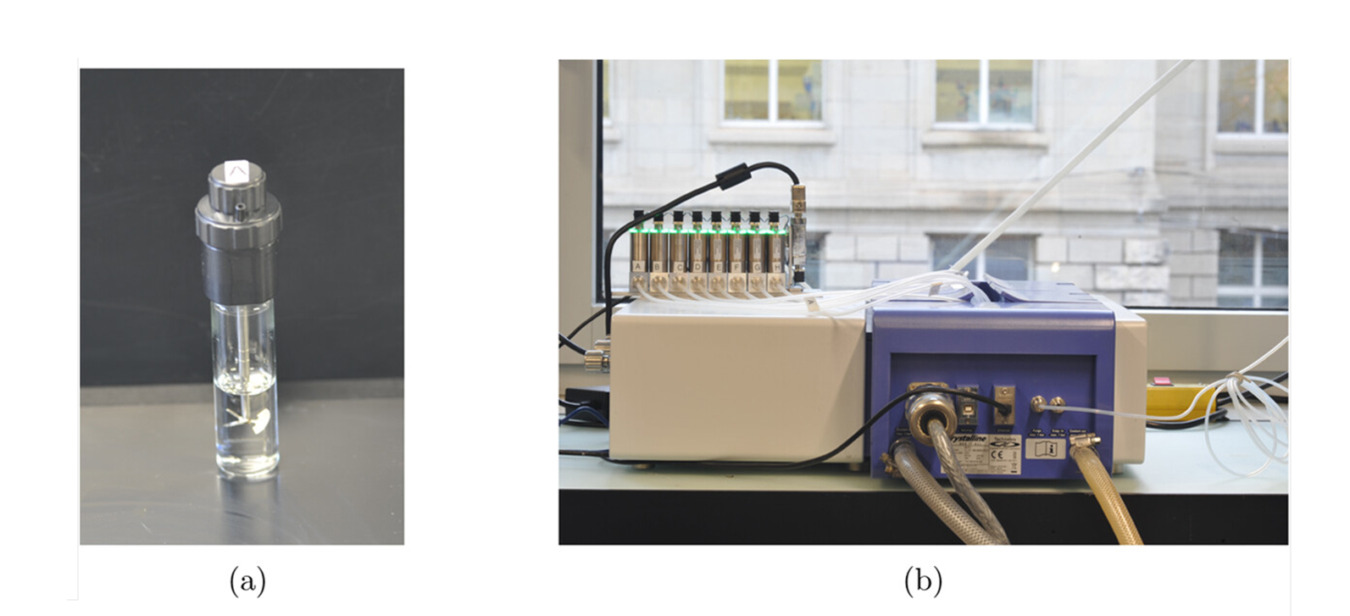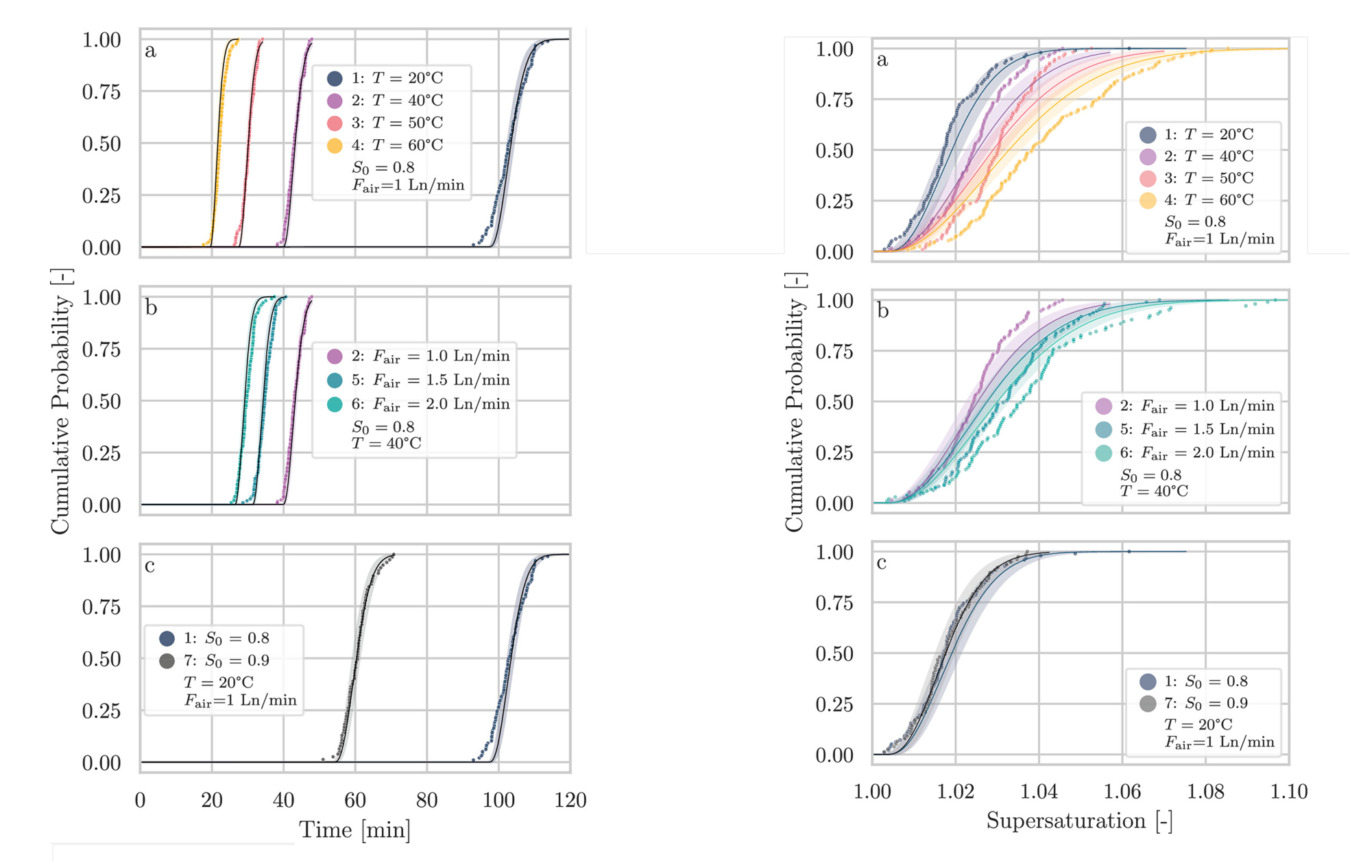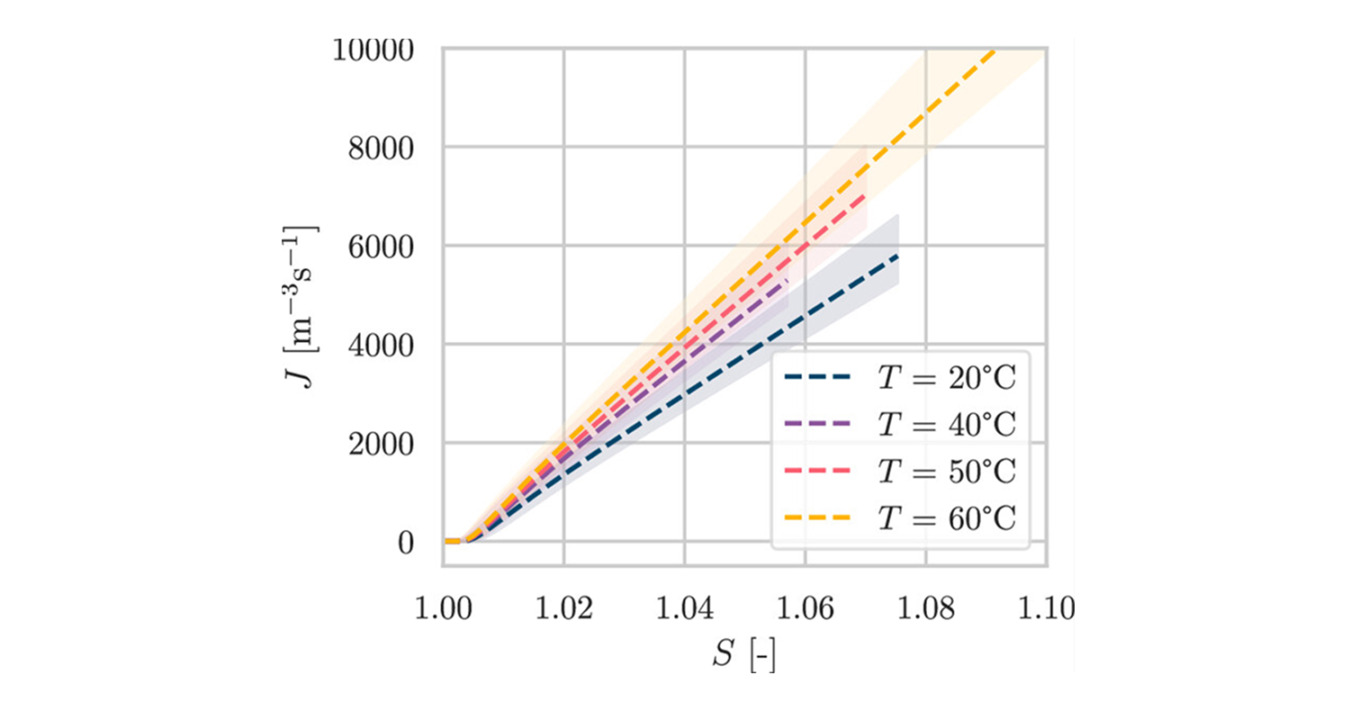Introduction
This study, carried out by a team of researchers at ETH Zurich, introduces a vial-scale evaporative crystallization method to measure nucleation kinetics in sodium chloride solutions. This method is ideal for compounds with temperature-insensitive solubility. By varying operational parameters such as temperature, airflow rate, and initial concentration, nucleation times were captured and analyzed using a stochastic framework based on classical nucleation theory. The results show consistent behavior across conditions, with supersaturation and evaporation rate strongly influencing nucleation timing.
Experimental method
Experiments were performed using the Crystalline instrument, equipped with eight parallel reactors (8 mL glass vials), each with independent temperature control, magnetic stirring, and in situ laser-based transmissivity monitoring. A custom setup delivered dry air to each vial through thermal Mass Flow Controllers (MFCs) to precisely regulate evaporation rates.
Sodium chloride solutions (saturation ratios 0.8 and 0.9) were tested at temperatures from 20 to 60 °C and air flow rates of 1–2 Ln/min. Nucleation was detected as a sharp drop in transmissivity, and kinetic parameters were estimated using a classical nucleation theory model.

Experiment process

Images of: (a) Crystalline vial with evaporation cap and short-blade impeller. (b) Crystalline device with eight MFCs and tubing for vial connection.
Results and discussion
The results, presented as cumulative distribution functions (CDFs), revealed that higher temperatures and airflow rates led to shorter nucleation times due to faster solvent loss and quicker supersaturation buildup, as shown in Figure 1a (left image). At constant temperature (40 °C), increasing airflow alone also advanced nucleation, confirming the role of evaporation dynamics (Figure 1b (left image)). Supersaturation at nucleation, converted from time data, remained low (S < 1.04) and consistent across conditions (Figure 1 (right)). CDFs of supersaturation shifted depending on evaporation rate, with higher rates yielding broader supersaturation distributions. A validation experiment with a higher initial concentration (S₀ = 0.9) showed strong overlap with the reference case (S₀ = 0.8), confirming the reproducibility and robustness of the methodology (Figure 1c (right image)).

Figure 1: Cumulative probabilities of NaCl nucleation times (left) and supersaturations (right) under varying conditions. Scatter points show experimental data, solid lines are fitted model curves, and shaded areas indicate 95% confidence intervals. (a) Series 1–4: varying temperatures. (b) Series 2, 5, 6: different air flow rates. (c) Series 1, 7: different initial saturation ratios.
Variance analysis confirmed that most variability in nucleation timing was due to the intrinsic stochastic nature of primary nucleation, not experimental inconsistencies. Figure 2 presents plots of J as a function of S for simulations at different temperatures. The fitted nucleation parameters showed good agreement with literature values derived from alternative crystallization techniques, validating the experimental design and modeling approach.

Figure 2: Calculated nucleation rates as a function of supersaturation.
Conclusion
By combining precise control of stirring, temperature, and evaporation with sensitive detection, Crystalline proved to be a powerful tool for evaporative crystallization studies on a small scale.
This approach is ideal for systems like sodium chloride with temperature-insensitive solubility, as it provides consistent, reproducible kinetics through systematic experiments and stochastic modeling. Furthermore, this approach offers a practical alternative when conventional methods are limited. This broadens the range of conditions under which crystallization kinetics can be investigated.
References
We thank the authors for their valuable contributions and insights! Read the full study here:
Developing a Vial-Scale Methodology for the Measurement of Nucleation Kinetics Using Evaporative Crystallization: A Case Study with Sodium Chloride. Michele Chen, Leif-Thore Deck, Luca Bosetti, and Marco Mazzotti. Crystal Growth & Design 2025 25 (8), 2498-2509.
https://pubs.acs.org/doi/full/10.1021/acs.cgd.4c01722
See the Crystalline in action
Can Crystalline accelerate your pharmaceutical research? Let's run a demo – online or in your lab – to find out.